THERE are a range of different types of bandages available to horse owners including: exercise bandages, tail bandages and surgical bandages. Each type of bandage serves its own purpose and it is essential that they be applied correctly.
Ill-fitted bandages can cause untold damage to the horse. This week we look at stable bandages and how to apply them correctly.
Stable bandages can be made of wool or synthetic fibre and are applied when the horse is not working and therefore have little stretch to them. Full-size bandages should be 10-12cm wide by 2.1-2.4m long and are usually applied with padding underneath.
USE
PADDING
Fybagee and leg wraps are most commonly used under stable bandages for added protection and warmth. Fybagee pads are specially laminated layers of foam and felt, they are easily washed and durable.
Leg wraps come in a range of different styles and materials. The navy leg wraps pictured here are made of terrycloth (a fabric with loops that can absorb large amounts of water) foam and polyester.
APPLYING THE BANDAGE
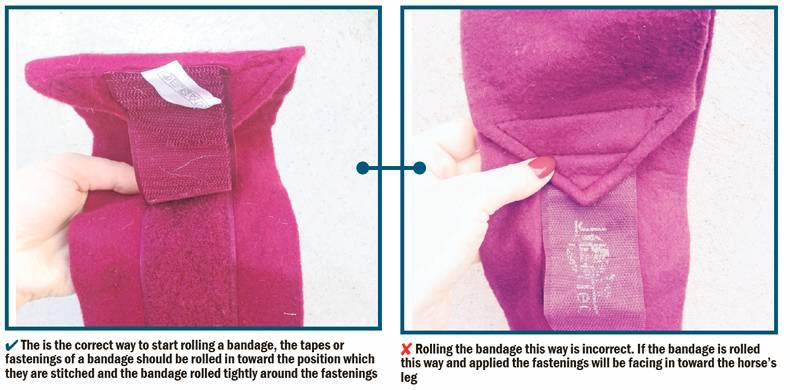
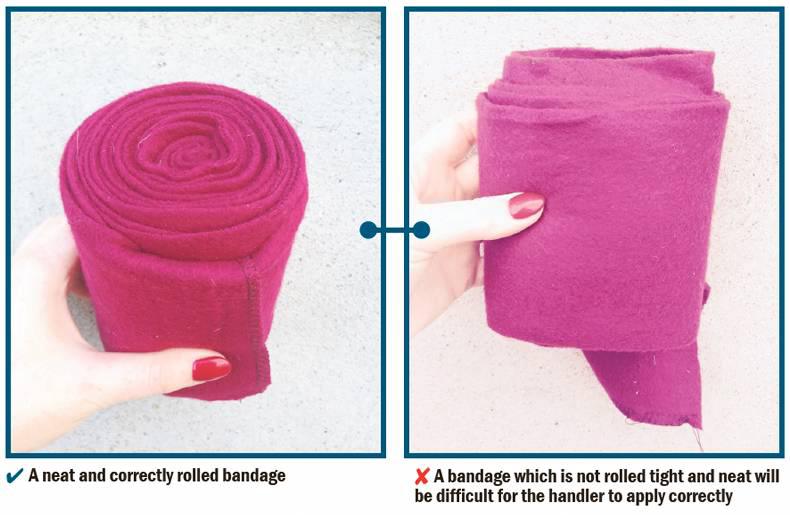
IMPORTANT INFORMATION
Step 1
Place the under-bandage padding securely around the leg. It should be applied only as firmly as is necessary to keep it in place and stop it from slipping.
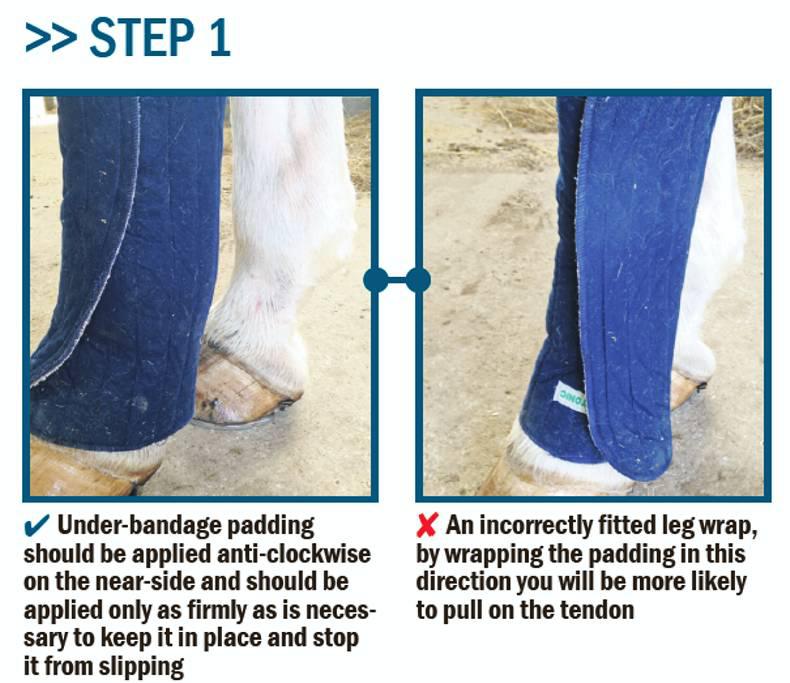
Step 2
Place approximately 10cm of the bandage at an angle above the first round. Start bandaging in the same direction as the overlap of the lining just below the knee or hock. The bandage should be firm and should hold the flap of the bandage in place. After the first round the flap should be folded down so that the rest of the rounds help to secure it.
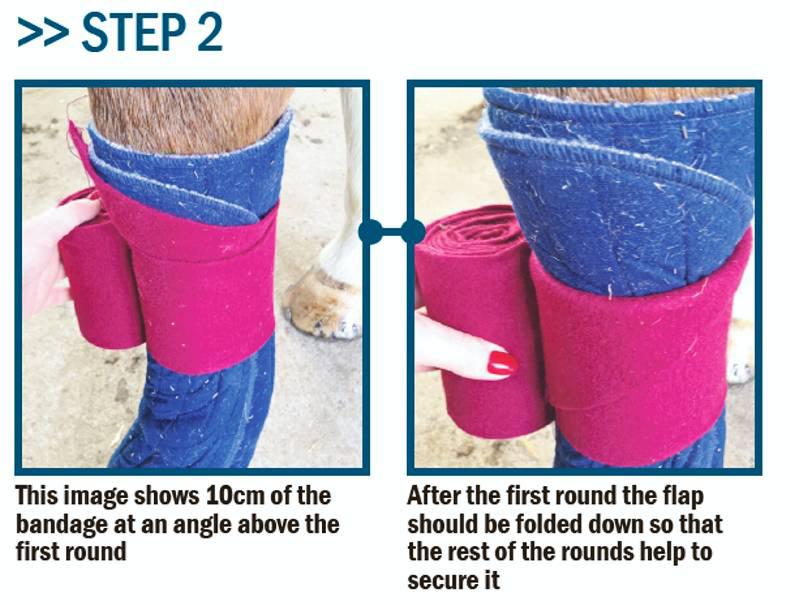
Step 3
Roll the bandage down the leg with a firm and even tension, the pressure should be minimal. The bandage should be applied without wrinkles. Approximately half the width of the bandage should be left exposed on each round.
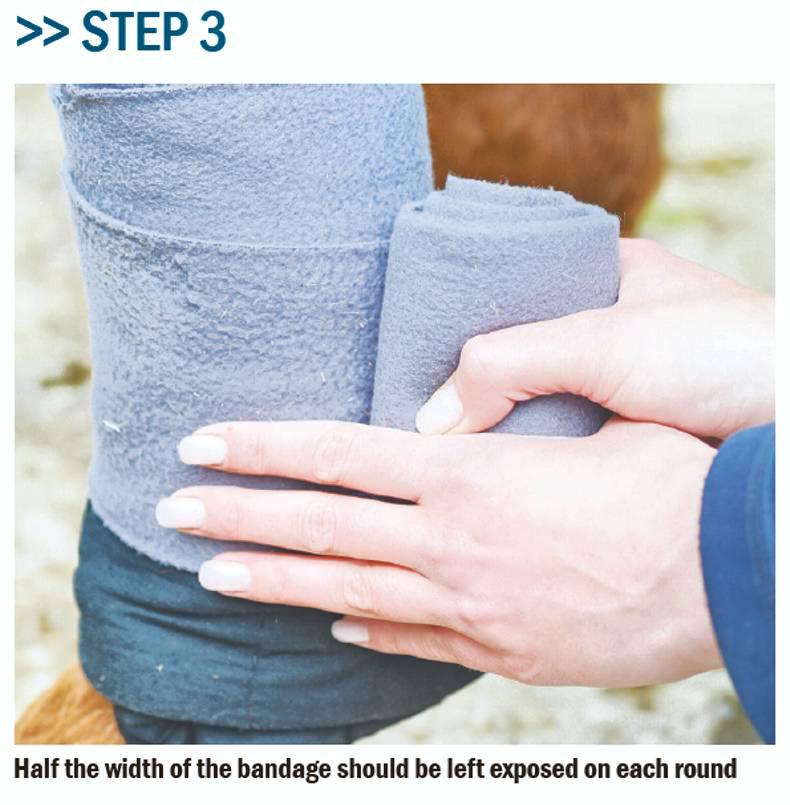
Step 4
The bandage should be wrapped straight across the leg until you reach the fetlock where ideally an inverted ‘V’ is left at the front of the fetlock joint where the bandage crosses itself. This is done by slightly altering the angle of the bandage upward and is done to allow ease of flexion at the fetlock.
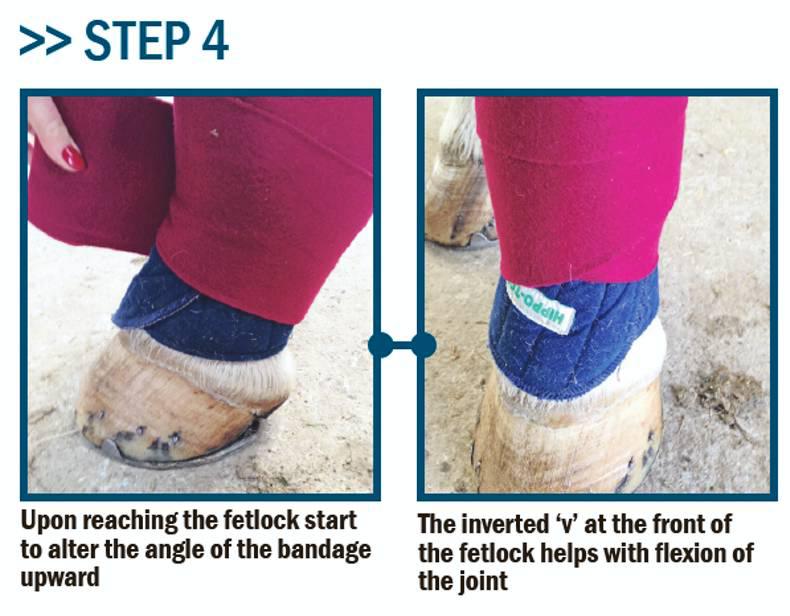
Step 5
Unroll the bandage in a similar upward direction finishing just below the knee or hock. The tapes or fastening should finish on the outside of the leg and should not be any tighter than the bandage itself. Bandages should not be fastened over a joint.
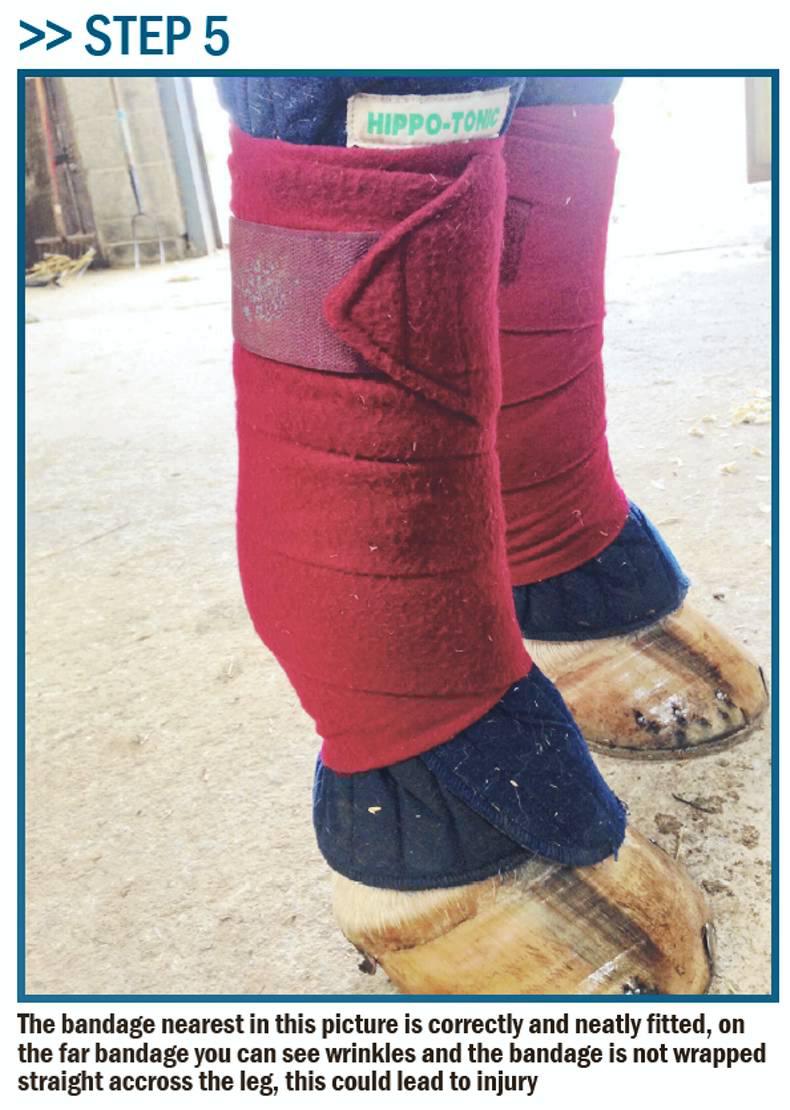
DAMAGE
Poorly applied bandages with wrinkles or twists and bandages which are too tight can leave marks on the horse’s legs and could possibly lead to tendon damage.
Bandages should always be fastened to the outside of the leg. Bandages fastened at the front of the leg may cause pressure and are likely to bruise the cannon bone, when fastened at the back it could injure the tendon. Bandages fastened on the inside of the leg are less accessible and can be rubbed by the other leg, making them less secure.
Loosely applied bandages are liable to slip down and become dislodged, the horse is then at risk of standing on the bandages or padding and injuring itself.
